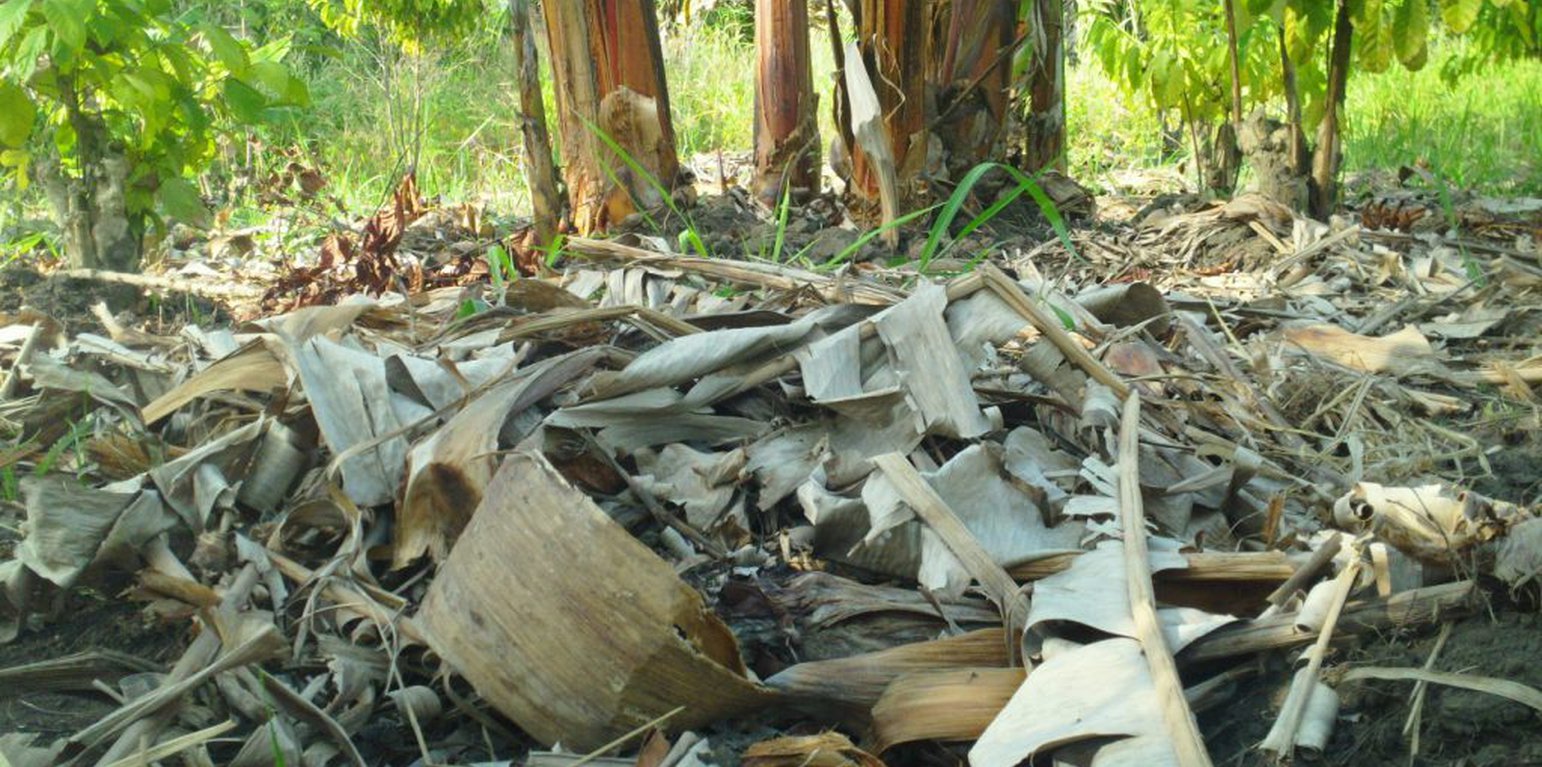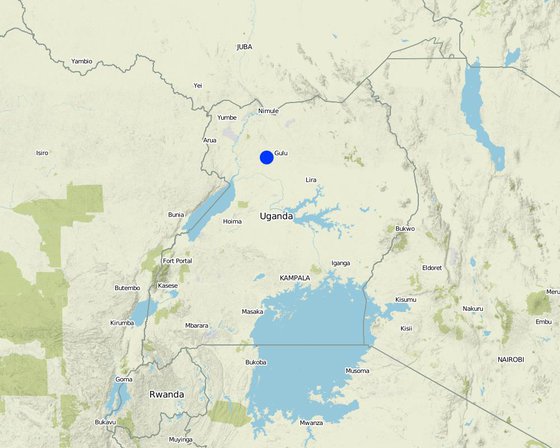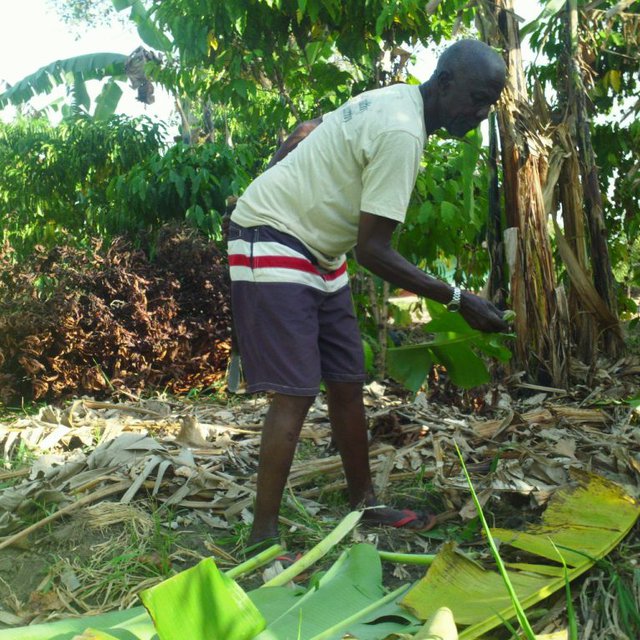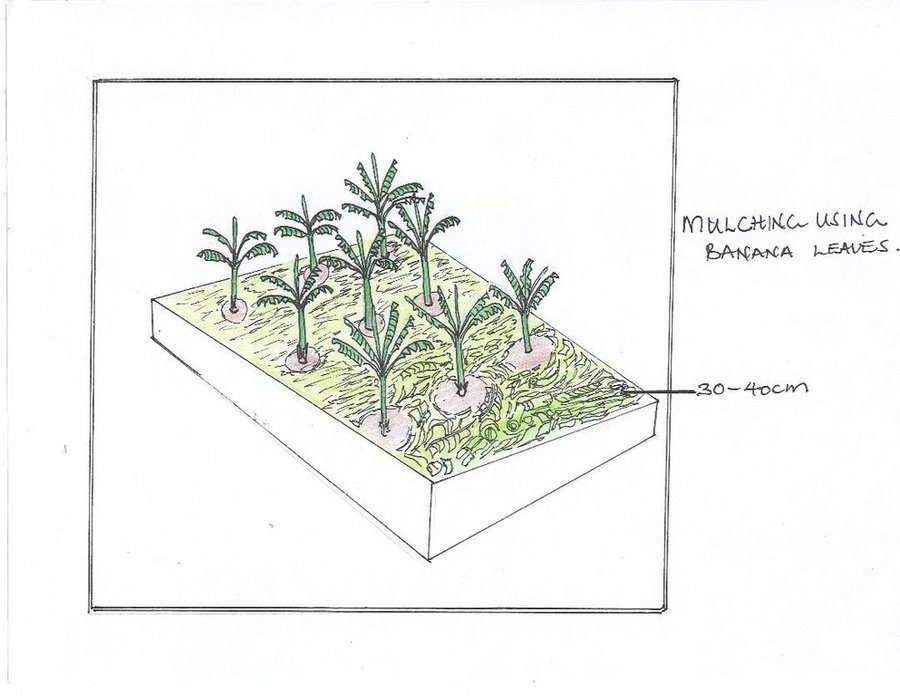



Locally obtained dry banana leaves is a low cost mulching material used by farmers in Northern Uganda to mulch soil in order to grow banana with the aim of improving soil fertility and soil moisture content retention.
The land user identifies a banana plantation usually 0.5 to 2 acres planted with sweet banana, Bogoya, Fear 17 varieties and spread the banana leaves across the banana plantation usually below 40-60 cm to the mother plant using 2-4 people per day, hoes and pangas.
Mulching is preferred because it uses locally available banana leaves within the plantation. It does not require high maintenance costs to pay for labor, digging and transport. Costs would be incurred transporting the mulching material. In addition to conserving moisture in the soils, it reduces water runoff to avoid erosion and improves the soil as the mulch material rots.
However, it is important for the land user to be aware that mulching using banana leaves serve as breeding place for banana weevils and if the land user places the mulch too close to the mother plant it will affect the growth of the young suckers. This therefore means land users who need to use this low cost mulching material need to first work out proper procedures with the extension worker on how to mulch banana plantation before mulching.
To sustain this technology, the land users can integrate cultivating multipurpose tree species (Calliandra and Grivellea) to additionally stabilize the soils and improve soil fertility when the tree mature and leaves litter.

Localização: Nwoya District, Northern Region,Uganda, Uganda
Nº de sites de tecnologia analisados: Local único
Difusão da tecnologia: Uniformemente difundida numa área (approx. < 0,1 km2 (10 ha))
Em uma área permanentemente protegida?:
Data da implementação: 2012; menos de 10 anos atrás (recentemente)
Tipo de introdução










| Especifique a entrada | Unidade | Quantidade | Custos por unidade (UGX) | Custos totais por entrada (UGX) | % dos custos arcados pelos usuários da terra |
| Mão-de-obra | |||||
| Persons days employed on monthly basis | persons | 10,0 | 70000,0 | 700000,0 | 100,0 |
| Equipamento | |||||
| Hoes | Pieces | 10,0 | 10000,0 | 100000,0 | 100,0 |
| Pangas | Pieces | 5,0 | 7000,0 | 35000,0 | 100,0 |
| Outros | |||||
| Training costs (transport) | sessions | 3,0 | 30000,0 | 90000,0 | 100,0 |
| Custos totais para a implantação da tecnologia | 925'000.0 | ||||
| Especifique a entrada | Unidade | Quantidade | Custos por unidade (UGX) | Custos totais por entrada (UGX) | % dos custos arcados pelos usuários da terra |
| Mão-de-obra | |||||
| Persons days on monthly basis | Persons | 4,0 | 150000,0 | 600000,0 | 100,0 |
| Fertilizantes e biocidas | |||||
| 100,0 | |||||
| Custos totais para a manutenção da tecnologia | 600'000.0 | ||||
As result of integration and application of manure from littered leaves of banana.
The farmer uses mulch material from the same garden that is mulching.
Expenses only incurred on purchase of pangas which are not high. Labour costs are high.
From the sale of matooke.
Reduced labour and costs required on farm after mulching.
With Mulching , the farmer is able to realise more bananas produced which makes him food secure. Even the money obtained from sale of banana is used to buy food like posho and beans.
Especially with NUSAF which supported the farmer with trainings.
Trained by Northern Uganda Social Action Fund (NUSAF) and extension workers on mulching using bananas.
Retained by mulch material.
Due to mulch material.
Due to decomposed mulch.
Retained by the mulch material.